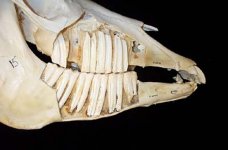Kieran225
Full Member
- Mar 6, 2021
- 190
- 486
- Detector(s) used
- Minelab vanquish 440
- Primary Interest:
- All Treasure Hunting
Follow along with the video below to see how to install our site as a web app on your home screen.
Note: This feature may not be available in some browsers.
Didn't mean insult.Thanks but can't be helped my phone is broken so not alot I could do about the quality of the pictures, hense why I haven't posted in so long.
I found it on the beach, seems very aged, my thoughts was a horse tooth but not too sure il try get better pictures later onCan you share where you found it or obtained it? Details will help with positive ID. Pretty sure as others said on horse tooth but details please. Thanks.
On the beach of North Sea?I found it on the beach, seems very aged, my thoughts was a horse tooth but not too sure il try get better pictures later on


Horse tooth?